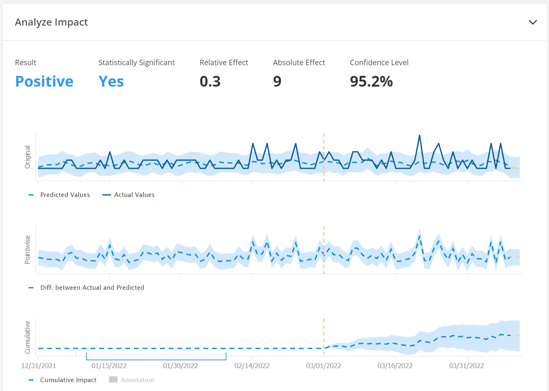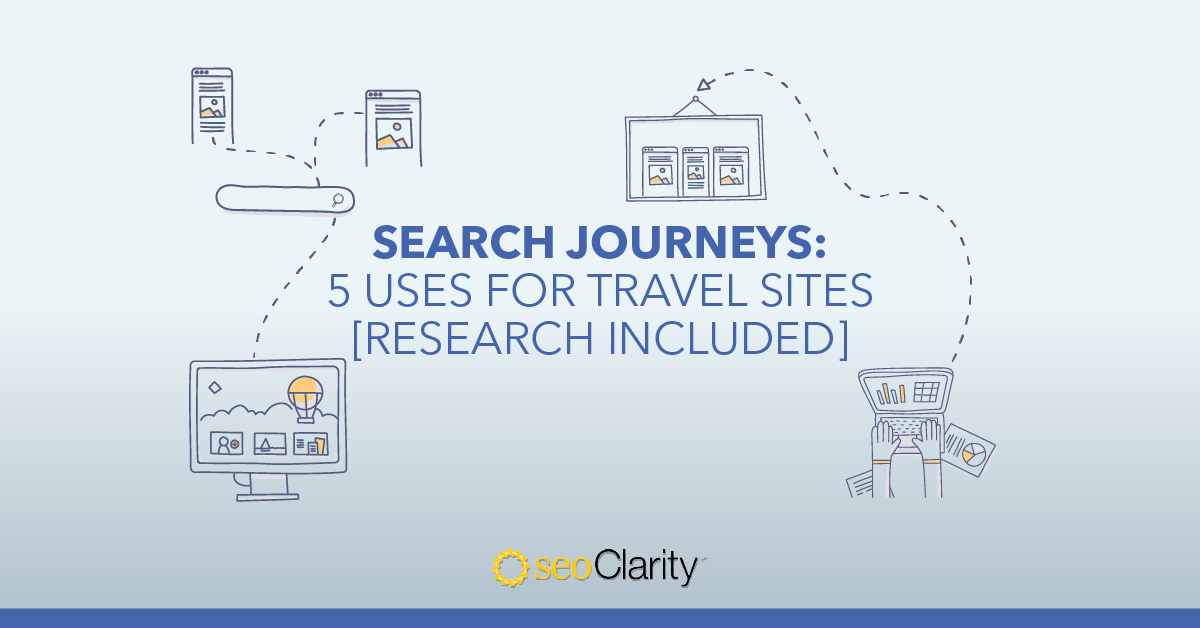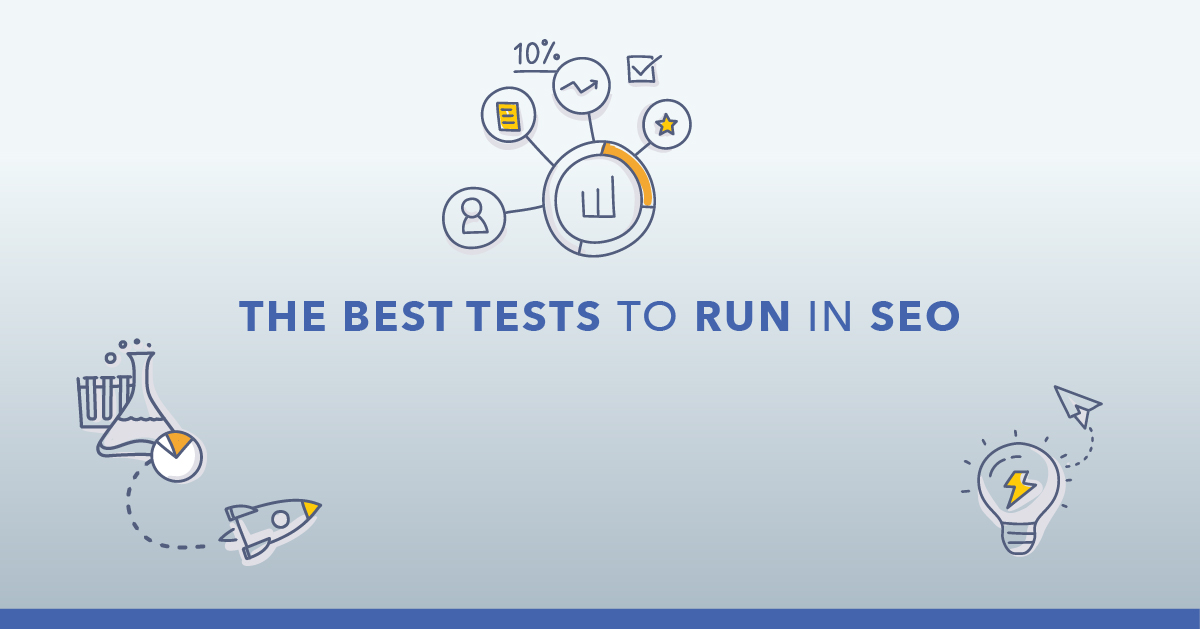Digital marketers can agree on the benefits of SEO testing: justifying projects, saving time, and earning buy-in.
Not only that — you can definitively prove which SEO strategies actually work for your site and your industry rather than trying to outsmart Google's algorithm.
Unfortunately, two roadblocks prevent tests from reaching fruition:
- SEO testing is technically difficult and requires considerable development time,
- You need to build a business case to justify the resources to build the test.
But a manual approach isn’t the only way to run an SEO test.
When you leverage an SEO automation platform to run the test, all of these points get addressed, allowing you to focus on the outcome of the test rather than the nuances of setting it up.
What Is SEO Split Testing?
SEO split testing is the process of changing one or more on-page elements of a webpage and comparing how the original page and variant page (or variant pages if you test multiple) drive organic traffic.
Recommended Reading: SEO Split Testing vs. Standard A/B Testing: What's the Difference?
How to Run a Successful SEO Test
There are a few steps to set up a proper SEO test.
- Identify something to test
- Group statistically similar pages to receive the test
- Implement the test element across multiple pages or templates
- Track and review the results
- Pull the test back or implement further, depending on results
All of this requires time, preparation, and attention to detail …
If you run the test manually.
While we’ll explain this manual approach, we also want to show you a new way to run a successful SEO test with just a few clicks.
Don’t believe us? Let us show you …
#1. Identify Something to Test
The first step to successfully run an SEO test is to choose a site element for testing.
For example, if you want to optimize for conversion rate (CRO), you might consider adjusting your call to action by adjusting its location on the page or changing the form it's presented in.
In our blog post on various SEO testing ideas, you’ll see everything from title tags to meta descriptions to schema to internal links. While you can’t present two different titles or meta descriptions to different users, these are still elements that can be adjusted and monitored!
When it comes to prioritizing what to test and when, our SEO testing framework provides a set of guidelines that will help you define and design test cases.
#2. Decide the Type of Page to Receive the Test
Once you know what element you want to test, it’s time to identify the type of pages you want to test.
This could be:
- Product Pages
- Category Pages
- Blog Posts
- Etc.
To choose your groups, start by forming a hypothesis.
You may want to determine if adding schema to a page increases organic ranking, for example. In this case, your hypothesis may be: “My product pages should rank higher if I implement the aggregate rating schema.”
Because of our hypothesis, we know the page type to receive the test is product pages.
Then those pages need to be sorted into test and control groups.
Having a control group helps you see what other factors could be affecting the outcome extraneous to the test variable.
The pages you run the experiment on need to be statistically similar to ensure reliable results, so use search data like organic traffic, rank, impressions and/or CTR to determine which pages are a part of the test.
The page groups can't be vastly different from each other — there needs to be some level of correlation between the groups.
How to Do This at Scale
If you don't know what pages to test, seoClarity's AI-powered SEO Split Tester will help you determine what group of pages to test on, and give you a scientifically-backed way to track results.
For example, if you want to run the test on pages tagged as “Product Pages” our technology analyzes those pages and recommends:
- The number of pages in total to test, and
- The statistically similar groupings of those pages to receive the change, and those to act as the control.
Our SEO Split Tester can even analyze your site data to offer a hypothesis for the test as well.

(Split Test Analysis presenting correlation percentage and strength.)
#3. Implement the Variable on the Pages in the Test Group
Now that you have your test element, your hypothesis, and the page groups, it’s time to run the test!
For manual testing, the launch is yet another difficulty since the changes need to be implemented on a specific group of pages (i.e. the test group).
Recommended Reading: Does A/B Testing Negatively Affect SEO?
If you’re a product website you might choose two categories that have similar traffic patterns for your testing — but this leaves a lot to chance.
Some verticals may choose to test pages based on a location like a city or zip code and compare the results to the performance of a similarly sized city.
How to Do This at Scale
With seoClarity’s SEO Split Tester, the implementation takes place instantly across thousands of pages.
Simply define the change, and the update takes place in real-time.
Recommended Reading: How to Run an SEO Test with seoClarity
Better yet: no more waiting for the dev team to see your test implemented. Because, in honesty, they probably wouldn’t implement the change for you if you couldn’t prove that the test works in the first place … It’s the chicken and the egg.
Now you can implement test variables on your own to build out that business case.
Here’s a taste of what you’re able to instantly implement on your site:
- Add Optimized SEO Content
- Update or Add Internal Links
- Make On-Page SEO Changes
- Implement Structured Data
- And a whole lot more …
#4. Review KPIs
Once the test is implemented and live, it’s time to monitor the results …
A good step here is to monitor the appearance of the changes in the search results. When you see that Google has picked up on the test groups’ changes and shows them on the SERPs, it’s time to monitor (though, this can be difficult to detect manually.)
A good rule is to run the test for at least two weeks — this should give Google enough time to index the changes.
Then, monitor key performance indicators.
Track rankings and traffic for the test group and compare that to the control.
This becomes a lot easier with access to an SEO platform. Google Search Console and Google Analytics also offer good insights.
NOTE: The time period you run the test is important, too. For example, organic site traffic can change drastically during the week compared to the weekend.
When you can clearly detect a divergence between the test and control, call the test positive or negative. If a divergence never materializes, call it indeterminate.
There also needs to be a significance level so you know the results are reliable.
How to Do This at Scale
One new and improved method is using Bayesian structural time series models (like Causal Impact) and a data analyst.
Even better is Split Test Analysis report, which uses the above model without the data scientist since it automatically reports clear results.
Once the analysis reaches statistical significance, the test is over and the Split Test Analysis report is presented.
Most A/B tests are traffic-based, but this lets you test clicks, CTR, impressions, and average position, too.
Recommended Reading: The Difference Between SEO Split Testing and Standard A/B Testing
Split Test Analysis will accurately measure changes in organic traffic and other metrics.
The image below reveals the results of the test (positive or negative), the statistical significance, relative effect, absolute effect, and the confidence level of the test.

#5. Decide to Further Implement or Pull Back the Changes
Depending on the results of the test, the test element can either be implemented on more pages or undone.
If the results are positive: queue it up for the dev team for full rollout with proven ROI.
If the results are negative: remove or reiterate.
How to Do This at Scale
Just like the testing elements were implemented at scale with a few clicks in step #3, you can add, edit, or adjust the specified element depending on the results of the test.
Conclusion
SEO testing definitively shows you what works and what doesn’t in the interest of your KPIs.
“Search engine optimization” is now thought of as search experience optimization — testing lets you see what users find valuable.
Although you can do it manually, enterprise sites with thousands of pages (or more!) would benefit from automated SEO testing.
<<Editor's Note: This blog was originally published in June 2018 and has since been updated.>>








2 Comments
Click here to read/write comments